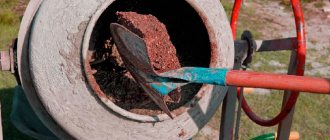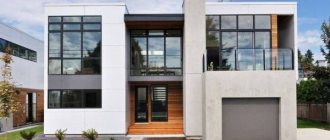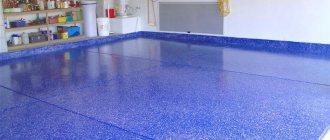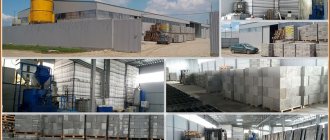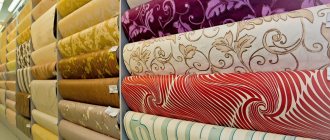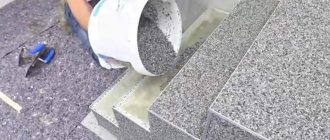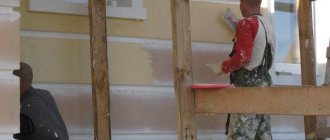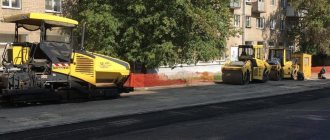Characteristics
If we consider this material from a technical point of view, it is unique. That is why its use has become popular among both beginners and professional craftsmen.
Latex putty is used on various coatings, including:
- gypsum surfaces;
- walls covered with plaster;
- brick walls;
- concrete surfaces.
The only base to which latex putty is not applicable is metal. This needs to be remembered. The latex solution can be used as a finishing putty layer, which perfectly levels the walls. They can also be used to seal seams in plasterboard sheets. For repairing minor damage and small defects on walls, latex solution is a real salvation.
When cracks appear in a concrete wall or bricks, choosing a latex mortar will be the right solution to eliminate them. They are also convenient for aligning corners.
The composition of latex putty includes:
- latex as a binding component;
- plasticizers;
- fillers;
- purified water;
- antiseptics;
- hardening regulators;
- modifiers.
If we talk about technical characteristics, it is worth pointing out that:
- The layer thickness is quite thin - up to 3 mm.
- Consumption depends on what layer the solution is applied, but on average - from 0.5 kg to 2 kg per m2. If you apply the mixture in a layer of 1 mm, then the consumption will be minimal.
- The complete drying process takes about a day. This largely depends on the manufacturer and the room where the material is used. The ideal temperature for puttying is considered to be +20 degrees.
- The interval between application of layers is 12 hours. This time is enough for drying so that the next layer can be applied.
- Shelf life – 24 months.
- There are no toxic substances.
Manufacturers of putties
Since the construction market is overcrowded with various types of putty compositions, it is often difficult to decide on the choice of material. Therefore, it is strongly recommended to choose products from companies that have been operating on the Russian market for a long time and have gained popularity among builders and finishers due to their quality, completeness and reliability of the information provided by the manufacturer.
Below are several tables with the characteristics of putties produced by the “masters” in the production of construction and finishing materials.
Products
This German manufacturer can be called the most popular on the Russian construction market, and it must be said that this is well deserved. Products are always distinguished by their high quality and variety. It is produced on high-tech equipment using innovative technologies.
One of the most reputable brands -
Knauf building mixtures are environmentally friendly materials that do not emit toxic substances hazardous to human health. It is easy and pleasant to work with putties intended for various finishing stages, as they have high adhesive properties and ductility.
represents a wide variety of putty compositions made on different bases:
| Name of product | Area of use of the material and its brief characteristics | Packaging, kg | Average price per package (summer 2017) | Consumption (kg) per 1 m², when applying a layer of 1 mm |
| "Knauf - Fugen" (dry mixture) | The basis of the material is gypsum. The mixture is plastic, has good adhesion, and is used for sealing drywall seams and puttying, as well as gluing gypsum board sheets to walls. | 25 | 350÷400 rub. | 0.8 |
| "Knauf - Fugen Hydro" (dry mixture) | Gypsum-based, has excellent adhesive properties, used for sealing seams and puttying moisture-resistant drywall. Well suited for damp rooms Can be applied to surfaces in a layer of 3÷5 mm | 25 | 900÷950 rub. | 0.8 |
| "Knauf - Uniflot" (dry mixture) | The base of the putty is high-strength gypsum. This mixture should be classified as a repair material, since it is more suitable not for putty, but for gluing drywall, sealing its seams, as well as leveling individual flaws on concrete and plastered surfaces. It is highly durable and does not shrink when dried. At the same time, it is very economical in consumption. Due to the high price and low consumption, in addition to the standard 25 kg packaging, it is also sold in 5 kg bags. The thickness of the applied standing is from 1 to 5 mm. | 25 | 1350÷1500 rub. | 0.5 |
| "Knauf - Rotband-Finish" (dry mix) | A good finishing gypsum putty mixture. It has good ductility and a sufficiently long service life of the composition. The mixed mixture can be used within an hour. Application thickness – from 0.2 to 5 mm. | 25 | 370÷400 rub. | 1 |
| "Knauf - Multi Finish" (gypsum-based dry mixture) | It has characteristics similar to Rotband-Finish, but this putty is easier to sand, bringing it to perfect smoothness. Application thickness – from 0.2 to 3 mm. | 25 | 350÷400 rub. | 1 |
| "Knauf - Multi Finish M" (dry mix) | This putty option is suitable for both manual and machine application. Has excellent adhesion to any prepared surfaces. | 25 | 400÷450 rub. | 1 |
| "Knauf - HP Finish" (dry mix) | The mixture is popular among professional builders, has good characteristics for ordinary putty and is notable for its low price. However, it should be noted that there are materials that are significantly superior in quality to this mixture. It is recommended to consider only as a very “budget” option. Application thickness – from 0.2 to 3 mm | 25 | 200÷250 rub. | 0.9 |
| "Knauf Multi Finish" (paste) | Ready-to-use putty paste with excellent ductility and adhesion. The material is very easy to work with. Apply to the surface in a layer of 1÷3 mm. | 20 | 700÷750 rub. | 1.7 |
| "Knauf Rotband Pasta" (paste) | The ready-made mixture for the finishing layer, made on a vinyl base, has a super white color, has high adhesion, and is applied to the surface in a layer of 0.1÷2 mm. Used for leveling internal surfaces for painting, wallpapering, and decorative relief plaster. | 5 | 350÷400 rub. | 1.7 |
| "Knauf Multi Finish" (polymer-cement dry mixture) | The material is intended for leveling surfaces covered with cement plaster in rooms with normal and high humidity, as well as facade surfaces. Apply a layer of 1 to 3 mm. | 25 | 400÷425 rub. | 1.2 |
Putties from the Henkel Bautechnik concern
This concern includes several renowned manufacturing companies of building materials. Among them is such a well-known brand as “Ceresit”, under which a variety of building mixtures are produced.
Ceresit putties – high quality at an affordable price
It must be said that the line is somewhat smaller than that of, but each of the compositions has a specific purpose, which allows you to accurately determine your choice.
We recommend: Moroccan plaster - materials and techniques for applying a unique, moisture-resistant coating
| Name of product | Area of use of the material and its brief characteristics | Packaging, kg | Average price per package (summer 2017) | Consumption (kg) per 1 m², when applying a layer of 1 mm |
| "Ceresit CT 127" (dry mix) | White polymer putty designed for leveling walls in dry rooms. The material has average ductility and rubs off quite easily. The surface leveled with this mixture in accordance with the technology turns out to be perfectly flat and smooth. The thickness of the composition is from 0.5 to 3 mm. | 25 | 580÷650 rub. | 1.3 |
| "Ceresit CT 225" (dry mix) | Facade finishing putty made on a cement base and containing reinforcing additives. Apply a layer up to 3 mm thick in one go. Well suited for leveling cement-sand and cement-lime surfaces. Available in gray and white. The material is also used in rooms with high humidity. | 25 | 650÷720 rub. | 1.2 |
| "Ceresit ST 95" (paste) | Ready-to-use polymer finishing putty is white, plastic, crack-resistant, has excellent adhesion and is easy to sand. Designed for use in dry rooms on concrete, plasterboard and plaster surfaces. Putty is not recommended for use for leveling wooden surfaces. | Buckets 5 or 25 kg | ≈330 and ≈1320 rub. respectively | 1.7 |
Production compositions
Putties from this manufacturer can be called the standard of quality among all products that can be found on the Russian market.
Another “giant” in the production of putty compounds
All materials for leveling surfaces produced by this company are very flexible and have a long “life”, which allows you to carry out work without unnecessary haste. "Weber-Vetonit" presents on the market a fairly large assortment of putty mixtures produced on different bases:
| Name of product | Area of use of the material and its brief characteristics | Packaging, kg | Average price per package (summer 2017) | Consumption (kg) per 1 m², when applying a layer of 1 mm. |
| "Weber.Vetonit VH" (dry mixture of gray or white color) | A cement-based putty designed for interior and exterior finishing work. Perfect for rooms with high humidity. Both gray and white putty can be used to apply the starting and finishing coat. Application thickness – from 1 to 4 mm | 25 | Gray ≈ 520 rub. White ≈ 880 rub. | 1.2 |
| "Weber.Vetonit KR" (dry mix) | The finishing material is white, produced on the basis of an organic binder, which indicates its environmental characteristics. Intended for finishing coating of surfaces in dry rooms. Application thickness – from 1 to 3 mm. | 20 | 400÷420 rub. | 1.2 |
| "Weber.Vetonit LR+" (dry mix) | White polymer-based finishing putty, intended for interior work. The material has excellent ductility and is easy to apply to surfaces. When using this putty for wallpapering, the wall must be treated with a primer, otherwise when you decide to replace the wallpaper, it will be removed along with the putty. Application thickness – from 1 to 5 mm. | 20 | 550÷600 rub. | 1.2 |
| "Weber.Vetonit LR Fine" (dry mix) | White polymer-based finishing putty for interior use. Filling: finely dispersed marble chips. Great for perfectly leveling walls for painting and wallpapering. Application thickness – from 0.5 to 3 mm. | 25 | 720÷780 rub. | 1.2 |
| "Weber.Vetonit JS" (dry mix) | Polymer finishing putty for interior work in dry rooms. It is applied with a thickness of 1÷2 mm on any complex substrates, including previously painted and covered with decorative plaster surfaces. Application thickness – from 1 to 2 mm. Does not shrink. | 20 | 500÷600 rub. | 1.2 |
| "Weber.Vetonit LR Pasta" (ready-to-use paste mixture) | The putty is made on a water-soluble polymer base with mineral additives - natural limestone. The material is intended for finishing high-quality leveling of surfaces in dry rooms. It has the purest white color, is super elastic, and gives layers that are completely invisible to the eye. The filler fraction size is 0.06 mm. Apply thickness up to 0.2 to 3 mm. | 20 | 720÷780 rub. | 1.7 |
In addition to these most famous and impeccably proven German companies, on the Russian market you can find products from Polish, American and other manufacturers. The most famous of them are Atlas (Poland), Sheetrock and United States Gypsum (USA), Beckers (Sweden), Tikkurila (Finland).
Among the domestic manufacturers of building materials that produce putty mixtures of decent quality, we can highlight the following: “GLIMS-Production”, “Starateli”, “Yunis”, “Ural Construction Mixes” and some others.
Video: recommendations for selecting putties for repairs
Peculiarities
Like all putty mixtures, the composition of the latex coating includes:
- various fillers;
- special substances that impart plasticity and elasticity to the material;
- additional additives that give the material certain properties.
The main component in the manufacture of latex coating is an emulsion of dispersed polymer particles in an aqueous solution. There are several types of latex and depending on what type was used in the production of putty, the characteristics and properties of the mixture will depend.
Special components, such as antiseptics, are often added to latex putty. Antiseptic additives allow the use of this material in rooms with high levels of humidity, since the resulting coating will be resistant to the formation of fungus and mold.
Features of application.
Like any finishing material, latex putty has several specific properties, due to which it requires certain knowledge when using it. Before applying the material to the surface, it must be cleaned of dirt. To ensure the durability of the finish, I apply a primer to the work area; you can also simply moisten it with water. This procedure will also protect against shrinkage. I advise you to take into account that it is better to apply putty at temperatures above 5-8 degrees. So, if it does not correspond, you should first warm up the room in which the finishing is being done, in order to avoid unpleasant incidents.
Dilution of Tex latex putty has few differences from regular putty. I think that it is quite enough to gradually add the material to clean water, remembering to stir until a paste forms.
In my experience, the proportions of water and putty are approximately the same. I do not recommend diluting a large amount of material - it will dry out. Calculate what the consumption will be per hour of work - this amount and mix.
I always apply professional latex putty with a thin ball, because it does not always withstand a few millimeters of excess thickness. Plus, this way you can save a lot. A layer of approximately 3 mm will be ideal. But there is one nuance here: when sealing joints or holes, its thickness should not exceed 1 mm. I prefer to apply the solution with a spatula. If it is necessary to make several layers, it should be taken into account that a repeated procedure is possible only after complete drying.
Related article: How to buy inexpensive interior doors? Advice from the experts
A huge plus of latex putty is the compatibility of its use with various decorative and paint materials. The putty is very elastic, so no sanding is required. The most I do after finishing the puttying is to level the surface with a slightly damp sponge. I do not recommend using sandpaper for sanding, as it takes a long time and with its help it is easy to “grab off” an extra piece.
Kinds
There are no big differences in the latex mixtures produced. Depending on the composition and manufacturer, some properties of the material may differ.
Based on the form of release, the following types of products are distinguished:
- ready-to-use solution;
- dry mixtures from which you need to make a solution yourself.
Latex putty is available in a wide range of colors, which makes it easy to choose the right shade. In addition, latex mixtures differ from each other in terms of production volume.
According to the scope of application, the following compositions are distinguished:
- for interior decoration;
- for external construction work;
- universal mixtures;
- for dry rooms;
- for wet rooms.
Advantages and disadvantages
Like every type of putty mixture, latex-based mortar has its own advantages and disadvantages.
The advantages of this composition include the following properties and characteristics:
- The coating has minimal shrinkage.
- Some types of latex coating are resistant to temperature changes. This property allows the material to be used not only for interior, but also for exterior wall decoration.
- Resistance to precipitation.
- Wide range of different shades.
- High adhesion rates with various materials.
- Due to its viscous consistency, the solution easily penetrates and fills cracks on the surface.
- When dry, it forms a highly durable coating.
- Good elasticity.
- Excellent as a base for painting. This coating does not absorb paint solutions, which reduces paint consumption during finishing.
- Ease of construction work.
- The resulting coating does not crack or crumble.
Despite the impressive advantages of latex putty, it also has its disadvantages.
Let's consider the main disadvantages of the material:
- The prepared solution should not be exposed to low temperatures. When frozen, the material loses some properties. Therefore, even if the solution is thawed, it will no longer be suitable for use.
- The price for such a coating exceeds the cost of many types of putty. However, this material can be applied in a layer one millimeter thick, unlike acrylic or cement putty, which can significantly reduce the consumption of the mixture.
What is putty used for? Overview of types and types
Preparation and leveling of walls before finishing work implies the mandatory use of putty. The composition of the putty may be different, and they may also differ in grain size and form of implementation. This variety of putties is explained by different areas of application and was created so that each user can choose the optimal type of putty for the surface being treated.
Purpose and application
Many novice repairmen wonder what putty is needed for and whether it is needed at all. This material is used to level out large irregularities, and is also used before applying the following finishing materials:
- paints;
- wallpaper;
- decorative plaster.
Putty compositions can be sold dry or ready-made. Ready-made formulations can be used immediately, but dry ones must be diluted according to the instructions.
Basically, putties are prepared in small portions, which will be enough to carry out a certain amount of work.
Technical characteristics and certificate of conformity
Depending on the place of application and the surface being treated, the technical parameters of the mixtures will differ. Let's look at the main technical characteristics of the putty that the buyer should take into account:
- release form;
- strength;
- elasticity;
- permissible time for using the finished putty;
- consumption;
- layer thickness;
- drying time;
- maximum temperature for use;
- shelf life of putty.
A certificate of conformity is issued for both dry and ready-made putty. The first type of putty is sold in bags; this composition is inexpensive. The shelf life of dry putty is much longer, which makes it possible to mix the solution to the desired viscosity level. Ready-made mixtures are sold in plastic buckets that have different volumes. The time for using such compositions is limited, so when choosing, you need to pay attention not only to the certificate of conformity, but also to the recommendations for use.
A certificate of conformity for putty is issued on a voluntary basis, at the request of the seller or manufacturer, since this product is not included in the unified list of goods certified by law.
Note! Although the putty does not undergo mandatory certification, a registration certificate is issued for it by Rospotrebnadzor. Such a document indicates compliance of the putty product with GOST standards. Also, according to GOST 10277 90, the instructions indicate the technical conditions for storing and using the putty.
Advantages and disadvantages
Like any other building material, putty has its advantages, and we will consider the disadvantages in more detail.
- excellent adhesion;
- ease of operation;
- long drying period, which allows you to eliminate unevenness that formed during the work process;
- ability to level surfaces with large differences;
- resistance to temperatures and external irritants;
- the presence of clear recommendations for use in the instructions;
- affordable price.
- granular structure;
- setting duration.
Note! These disadvantages are insignificant and for some users who are novice repairmen, they are rather considered as advantages.
Classification of putty types
What is putty? Putty is a fairly easy-to-use mixture that perfectly smooths out roughness and unevenness of any nature. Each type of putty has its own advantages and disadvantages and differs in scope of application. Therefore, it is necessary to consider each composition separately in order to decide which putty is best for puttying.
The choice of putty depends on the type of surface to be treated. Such mixtures are starting and finishing; they are intended for the final and preparatory stage of work. Also, a significant difference in putty lies in the binding component, which determines the location of the work, that is, putty is used for interior or facade work.
Starting and finishing lineups
Depending on the stage at which the repair work is carried out, there are starting and finishing putties. Let's look at the differences between them:
- The starting mixture is used for rough work, so it is applied first and with a rather thick ball. Before using the composition, the base must be thoroughly plastered. Starting solutions are used to level wooden and cement surfaces with a deformation of no more than seven millimeters. The composition is applied to the base in several stages, in a layer about 1.5 centimeters thick. The surface treated with starting putty turns out to be quite smooth, but has some roughness.
- The finishing mixture is designed to create a smooth base. It is applied on top of the starting putty. The thickness of the layer should not exceed 2 millimeters.
Types of putties based on the binder component
There are the following types of putties based on the binding component:
- oil;
- plaster;
- cement;
- polymer;
- acrylic;
- latex.
Each type of material has its own advantages and disadvantages. Let's look at the types of these putties in more detail:
- Oily. This substance is affordable, environmentally friendly and easy to use. Among the disadvantages are low adhesive properties and mandatory subsequent priming of the surface.
- Plaster. This mixture makes it possible to create a perfectly smooth base without scuffs and roughness. It does not contain toxic substances, but is not resistant to moisture. Also, this coating does not tolerate the negative effects of external irritants very well and increases the risk of corrosion when treating metal surfaces with it.
- Cement. A budget-friendly coating option, it is easy to install, so even a beginner can handle it. However, cement compositions are susceptible to microcracks, take a long time to dry and are difficult to apply to smooth substrates.
- Polymer. This putty is resistant to moisture and has a wide range of relief options. Polymer putties also do not require additional finishing. Among the disadvantages are the high cost and complexity of installation.
- Acrylic. This coating is resistant to moisture and high temperatures, and has a high coefficient of elasticity. It is used for facade work; there is a wide selection of shades. However, the bright colors of the mixture are not resistant to sunlight and after some time begin to fade and fade. Also, acrylic materials are rough, so dust often accumulates in them.
- Latex. Suitable for facade work. It is characterized by a high level of resistance to moisture and vapor permeability. Among the disadvantages are the high cost of the material and the complexity of installation. Also, latex finishes require priming first.
Universal putty
Universal putty materials are used to create base and finishing layers. This composition is quite convenient to use, but such material is quite expensive. A universal putty is used at all stages of repair and construction work. Over ceilings and walls.
We recommend: NC cement (tensioning) and its use in construction work
Types of wall putties according to the degree of readiness for use
All types of wall putties on the construction market are presented in two forms: dry and ready-mixed.
Dry compositions are a material in powder form, which must be diluted with water before application and carefully mixed until smooth. Such solutions are quite simple to prepare, they are easy to install and provide the ability to vary the density of the finished substance. They are quite easy to transport since they come in bags and are resistant to temperature changes. The price for such mixtures is lower than for ready-made solutions.
However, in order to prepare the solution it takes a lot of time and effort and it must be applied immediately after preparation, otherwise the putty may harden. Also, dry formulations are not resistant to moisture; they need to be mixed in small portions.
Ready-made mixtures are sold in plastic buckets or jars. Latex or silicone is mainly used as a binding component. The shelf life of the finished material is significantly higher than that of dry substances. Also, such solutions are characterized by plasticity, the absence of the use of additional means for dilution and a long shelf life of the composition when closed. The only drawback of this putty option is the high cost, which not every consumer can afford when making repairs.
Classification of wall putties by composition
The classification of mixtures by composition is similar to the distribution by binding element. Let's take a closer look at the most popular materials for wall putty.
Cement mortar
This material contains cement, solvent and sand. Among the advantages of the mixture are the following characteristics:
- Strength;
- Moisture resistance;
- the substance is highly susceptible to drying out;
- the mass is used only as a basis for finishing materials;
- low elasticity;
- the material has one color - gray;
- during operation, such putty may crack;
- not used for wood processing.
Gypsum based mixture
- has breathability;
- dries quickly;
- used for various materials;
- does not contain harmful substances;
- creates smooth surfaces;
- has no smell;
- has fire resistance;
- has an affordable price;
- does not cause an allergic reaction.
- not resistant to temperature changes;
- not recommended for use in rooms with high humidity;
- used only for interior work.
Calculation of the required amount of putty
To calculate the required amount of mixture to complete a specific amount of work, it is better to use a special online calculator. To do this, you need to enter in the fields provided the area of the surface to be treated, the thickness of the intended putty ball, the features of the base and the skill level of the performer. Next, the system will independently perform all the necessary calculations and display the result in kilograms.
Shelf life of putty
The shelf life of the mixture depends on the form of release. Dry masses can be stored under favorable conditions for an average of about a year, and ready-made solutions do not lose their quality for up to two years of storage.
Recommendations for choosing putties
How to choose putty? To do this, you must follow the following recommendations for choosing material for a certain type of work:
- walls - any materials are suitable, but in residential areas it is better to use gypsum.
- ceiling – acrylic and plaster;
- drywall - acrylic;
- wood – acrylic;
- façade works – cement;
- for paint - polymer or gypsum.
Review of popular manufacturers
Among the many different manufacturers of these solutions, three of the most popular brands can be distinguished, which are distinguished by high quality and good technical parameters:
- Knauf. Country of origin: Germany. The company's product range includes gypsum, cement and polymer mixtures in ready-made and dry form. You can also choose a product to treat any base. The main advantages of the company are the high quality of products and affordable prices.
- Tikkurila. This manufacturer produces gypsum and acrylic masses. This product is multifunctional and easy to install. There are 15 colors of solutions available, which allow each customer to choose the ideal shade of the product specifically for their home.
- Ceresite. The most popular and trusted brand. This company produces high-quality putties of polymer and cement composition, which can be used at various stages of repair.
Putty is a high-quality material that is used to level foundations at any stage of repair. Such solutions have high adhesion and are resistant to moisture, temperature changes and external irritants.
Scope of application of latex putty
Latex putty is an indispensable material in the process of interior finishing and is used as a finishing surface for surfaces of various origins, including concrete, brick, wood, fiberboard and plasterboard. The only exceptions are metal surfaces, for which latex putty cannot be used as a finishing touch. It is used for leveling various surfaces, which are subsequently subject to painting with oil, alkyd and water-dispersion compositions, and are also subject to wallpapering. Thus, latex putty, the use of which is very diverse, can be used for the following work:
- Applying a finishing putty layer that performs the function of leveling the surface;
- Use as a material for sealing seams of plasterboard sheets;
- Filling small potholes, irregularities and defects, the depth of which does not exceed 5 mm;
- Texturing surfaces of various natures;
- Treatment of small cracks in plaster, concrete or brick;
- Finishing niches and corners.
For reference! The fairly wide range of applications of latex plaster is due to its high adhesive characteristics. The use of latex putty guarantees its high adhesion to concrete, brick, plastered, as well as wooden and plasterboard surfaces.
Review of the best companies
- Vetonit produces a putty of average quality that is easy to work with. Please note that if in the future you need to remove old wallpaper, it will only be removed with a layer of putty.
- Tex putty is also a worthy option. This manufacturer offers high-quality latex material - latex putty pro. And since mixtures with latex are usually not frost-resistant, Tex has developed a frost-resistant mixture especially for the cold season that can withstand short-term freeze/thaw cycles up to 5 times. Unfortunately, mixtures of this brand are sometimes counterfeited, so you should pay attention to the store where you are going to purchase this product.
- Lakra mixtures contain additives that protect the treated surface from fungi and mold. Also, mixtures from this company can withstand up to 3 freeze/thaw cycles. They sand well even after drying.
- It is better not to buy Knauf products for non-professionals: their putty mixture is applied only in a thin layer and errors are unacceptable when working with it. Good to use as a finishing layer.
- Caparol brand putties adhere perfectly to the surface, making it perfectly smooth and even. They have low consumption and low cost compared to competitors.
- The manufacturer's product Sheetrock allows you to obtain a perfectly smooth surface without visible flaws. Used as a putty for painting and to create a decorative relief surface. Shitrok mixtures can withstand up to 10 freeze/thaw cycles.
Don't know which putty mixture to choose for a wooden surface? Latex wood putty is a good option and is very easy to work with.
Precautionary measures
- Latex putty is not toxic, but you still should not allow it to come into prolonged contact with unprotected skin. No one is immune from individual intolerance. If an allergic reaction occurs, the affected area should be immediately rinsed thoroughly with plenty of water.
- Do not forget to regularly ventilate the room in which work is carried out. Fumes released by drying putty can cause respiratory irritation.
- Unused putty remaining after repair work is strictly prohibited from being poured into sewers or natural reservoirs.
Why do you need putty?
Depending on the task performed, the masses are divided into:
- leveling,
- specialized,
- finishing,
- universal.
Specialized
With their help, certain tasks are accomplished, for example, sealing seams of gypsum panels without the use of reinforcing tape, “breathing” cracks, or joints of floor slabs. This category also includes dispersion putties for linoleum and laminate.
For window frames, wood putty, such as Olimp, is recommended
Leveling
The most extensive group of putties, their action is aimed at leveling the base. The choice of a particular mixture depends on the characteristics and characteristics of the surface, as well as operating conditions.
Oil-adhesive base putty TEX
Requirements for leveling putties:
- good adhesion (cohesion of surfaces) to the base and full compatibility with it;
- easy and reliable filling of all base defects;
- sufficient strength and durability.
In modern realities, putties are becoming increasingly popular, allowing the application of a layer of variable thickness from 1 to 25 mm.
Should reinforcing materials be used? If you have high-quality putty in your hands, additional meshes lose their relevance. The characteristics of the mixture should ensure the absence of cracks and shrinkage under standard operating conditions. Reinforcing materials are designed to work in areas with increased structural deformations or in difficult conditions.
From personal experience I can say that mixtures with a long and precisely standardized time of use have a slight advantage. For a standard working day and large volumes of work, putties with a “lifetime” of 8 to 24 hours are suitable. If we are talking about urgent work, I advise you to take a closer look at the materials in the “from 30 minutes to 4 hours” category.
Mechanized leveling putty has quite great prospects for speeding up finishing work. Its use makes it possible to produce up to 400 m² of area in one shift.
White leveling putty TEX
Finishing
Finishing putty for interior work is intended to obtain a surface ready for applying a finishing coating.
| Coverage type | Characteristics of putty |
| Under paint | The main requirement is the smoothness and evenness of the surface, which means our attention should focus on such an indicator as the size of the filler grains. The finer it is, the smoother the layer will be. A perfectly smooth, silky surface that does not require sanding is obtained by using putty with a grain fraction of up to 100 microns. Knauf and Pufas materials receive excellent reviews and my personal recommendations. They are quite plastic, easy to apply, have a long life time, during which they do not lose their qualities. Not the last place in the choice belongs to the issue of compatibility with the base and coating. Remember that paints have different penetrating, solvent and pH levels. I have often seen paint eat away at plaster, resulting in uneven coloring and staining. If there is a significant difference in the vapor permeability of the paint layer and the putty, peeling of the finishing layer may occur, the so-called “stocking” effect. |
| Under the wallpaper | The size of the filler grains in this case is not so important, however, I would not recommend taking materials with a fraction higher than 250 microns (for fabrics and thin wallpaper - up to 150 microns). The putty must be compatible with wallpaper adhesives, so I recommend choosing from a variety of latex and plaster adhesives.
|
| For wood | Acrylic, epoxy, polymer, oil and gypsum putties are suitable for preparing wood.
|
We recommend: Plastering columns: instructions for implementation
Universal
A universal putty can perform the functions of finishing and leveling, and in some cases even special. Convenient enough for non-professional use and simple surfaces. However, you must understand that it will always be inferior to specialized mixtures.
Tips for choosing
Before buying any building material, it is always useful to find out the opinion of a specialist, to get useful advice from a master or a person who has used this or that putty solution. So, when choosing and using latex putty, you must:
- determine the type of surface on which it will be applied, since latex solution is not suitable for metal surfaces, and acrylic putty would be the ideal choice for wooden walls.
- Almost all types are used for interior work, but only a few types of mixtures are used for exterior work.
- This type of putty should only be purchased in heated stores.
Before use, the purchased solution must be placed for several hours in the room in which the finishing work will be carried out. This is done for temperature adaptation.
You need to make a small amount of solution to work. It is better to dilute the mixture little by little, but more often. This is due to the fact that the solution dries quickly. If a ready-made solution is used, it must be placed in small portions in another container so that debris does not get into the main container, which can subsequently scratch the walls.
- On walls that have been pre-treated with a primer, the putty applies better and more economically.
- If the putty solution is used for other purposes (for example, for papier-mâché), then it should be applied with a rubber spatula, and not with a standard one for walls or ceilings.
